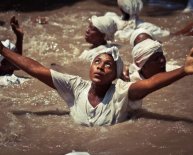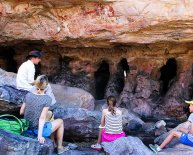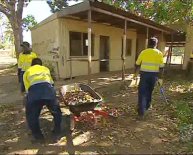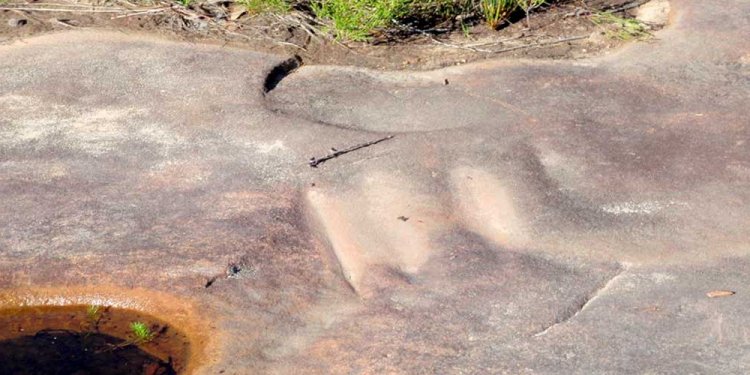
Australian Aboriginal religious beliefs
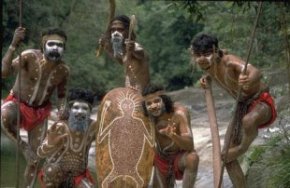 Olga Gostin – Australia
Olga Gostin – Australia
[The following article is from the Theosophical Encyclopedia, edited by Philip S. Harris, Vicente R. Hao Chin, Jr., and Richard W. Brooks (Quezon City, Philippines: Theosophical Publishing House, 2006), pp. 70-74.]
While it is now taken as a matter of course that indigenous Australian spirituality has a place in any encyclopaedia of world religions, it must be remembered that this facet of indigenous Australian life was not given due recognition until fairly recently. W. H. Stanner’s seminal article The Dreaming first published in 1956 can arguably be regarded as the watershed which put the spirituality of indigenous Australians on the map. Prior to that, and as a direct outcome of the colonial mind set of the British and nineteenth century evolutionary thinking, Aboriginal spirituality and cosmology were regarded as either non-existent or at best a form of magic which reflected the so-called “primitive” lifestyle of people whose existence was then considered predominantly “nasty, brutish and short, ” to quote Thomas Hobbes’ Leviathan about man’s life in a state of nature, as opposed to civilization.
Today, in the context of a more enlightened post-modern age and a shift away from ethnocentric and racist thinking, spirituality is considered to be the very essence of Aboriginal life. Discussion focuses rather on whether it is more appropriate to speak of Aboriginal religion or spirituality, and to debate what religious/spiritual aspects are validly and generally applicable to the diversity of peoples and cultures that make up Aboriginal Australia. It is relevant to this discussion to remember that at the time of European contact there were some 250 distinct nations and languages (up to 600 dialects) in the continent, covering the full gamut of ecological niches and environments.
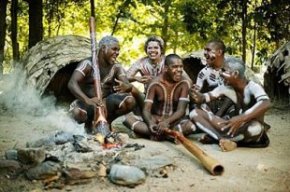 A holistic world view. The first fact that strikes the student of Aboriginal cultures is that there is no formal distinction between the sacred and the profane, between religious and secular living, between mind and matter, between humans and nature. Such contrasting dualities are inconsistent with a world view which is essentially inclusive and holistic. This is not to deny the importance of paired concepts and complimentary dualities such as male-female, moieties or paired kinship groups, associations between generations, paired totems or linked mental constructs. But in the Australian aboriginal world view, humans and all aspects of human endeavor, all animal and plant species, and all physical phenomena, from the night sky to the seasons and lightning, are regarded as equal manifestations of a timeless spiritual or cosmic order whose origins, meaning and integrity are not open to challenge (Gostin and Chong, p. 123).
A holistic world view. The first fact that strikes the student of Aboriginal cultures is that there is no formal distinction between the sacred and the profane, between religious and secular living, between mind and matter, between humans and nature. Such contrasting dualities are inconsistent with a world view which is essentially inclusive and holistic. This is not to deny the importance of paired concepts and complimentary dualities such as male-female, moieties or paired kinship groups, associations between generations, paired totems or linked mental constructs. But in the Australian aboriginal world view, humans and all aspects of human endeavor, all animal and plant species, and all physical phenomena, from the night sky to the seasons and lightning, are regarded as equal manifestations of a timeless spiritual or cosmic order whose origins, meaning and integrity are not open to challenge (Gostin and Chong, p. 123).
This world view and its interpretation form part of a body of knowledge that is itself seen as an extension of the cosmic order and comprises the accumulated wisdom of a given group, handed down from generation to generation by word of mouth since time immemorial. This does not mean that the body of knowledge is changeless or finite, but rather that change and additions become incorporated into the collective wisdom of the group (Gostin and Chong, p. 123-4). Individuals acquire this knowledge progressively and cumulatively during a lifetime punctuated by periods of formal and intense learning described as going through the Law. Knowledge is acquired both by imitation in day to day contact with peers and older persons, and by bestowal by specialist older persons. The latter often takes place in a highly charged ritual setting which is both secret and separate, during which initiates (both male and female, mostly separately) are temporarily removed from everyday circulation. Debate and challenge are not countenanced. The individual progresses through stages of specialized learning and graduates or comes out as a person of different ritual and social status with new knowledge, new privileges and new responsibilities. This change is universally accepted by the group whose acceptance enforces the person’s new role and responsibilities, derived directly from the ancient wisdom of the group and sanctioned by ritual whose origin is attributed to the prototype set down by the ancestral beings who are held to be directly responsible for the well-being of the group (Idem.).
While the authority of ancient wisdom, as interpreted and transmitted by the elders of the group, forms the cornerstone of Aboriginal spirituality, it does not mean that this world view is therefore changeless and sterile. Some cultural attributes mitigate against this. The first of this is the recognition of the need for balance: that life has both good and bad aspects and that these are inseparable. This applies not only within the sphere of human relations, but also to the relationship between humans and nature and even the wider cosmic order. This is amply demonstrated in the stories of ancestral beings who are not removed from everyday life, but who experience both the heroic and less noble foibles of human nature while carrying out their creative tasks. Balance also means accountability for one’s actions and the need to pay for one’s misdeeds. Rules are known and there are penalties for violating the moral order. Diversity and difference are recognized and respected, but must not run counter to the harmony and balance that is the hallmark of well ordered living. All things are interconnected and impinge on one another: there is recognition of the need for internal integrity and harmony just as there is interconnection between all things, past, present and future. Time is not linear but cyclical.
These attributes formed the basis of classical (pre-European invasion) indigenous Australian spirituality.
Due to the inherent diversity of Aboriginal cultures and the devastating impacts of colonialism — dispossession and dislocation from ancestral lands, repression of native languages, denial of cultural practices and forced assimilation — not all Aboriginal groups today can tap into a viable body of knowledge. Very few have managed to retain the social fabric to support access to ancient bodies of knowledge. However, strategies have been put in place or are being devised to ensure cultural transmission of knowledge and ritual enforcement through tapping into the wisdom of those groups which have been less affected by the inroads of the European invasion.
The Dreaming. The holistic world view which is the trademark of indigenous Australian spirituality finds its root in the concept of The Dreaming. Various terms have been applied at different times to this fundamental concept which has a vernacular expression in every cultural group, with shades in meaning and application. Among well-known vernacular terms for The Dreaming are tjukurrpa for the Pitjantjatjara/nangu whose country includes Uluru, alcheringa for the Arrernte to the immediate east of the Pitjantjatjara, muda for the Adnyamathanha of the Flinders Ranges of South Australia.

